Machaeranthera tagetina, Mesa Tansyaster

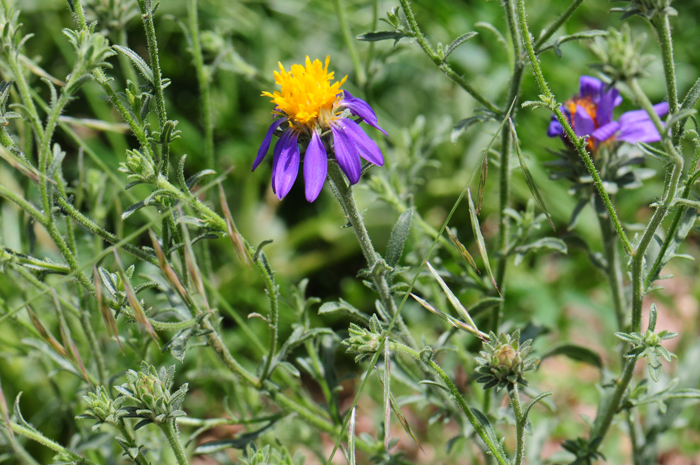
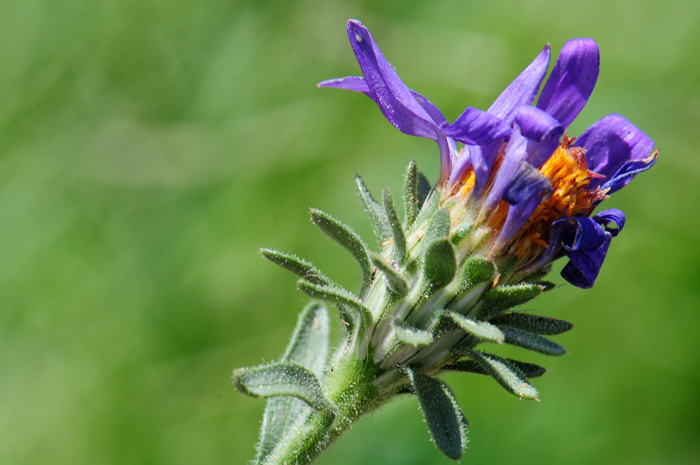
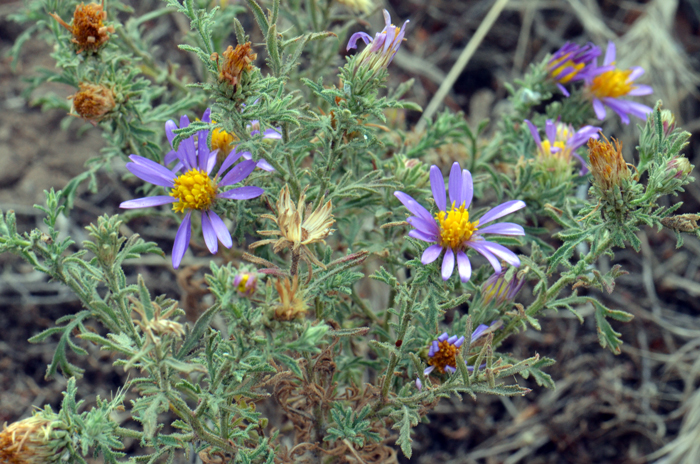
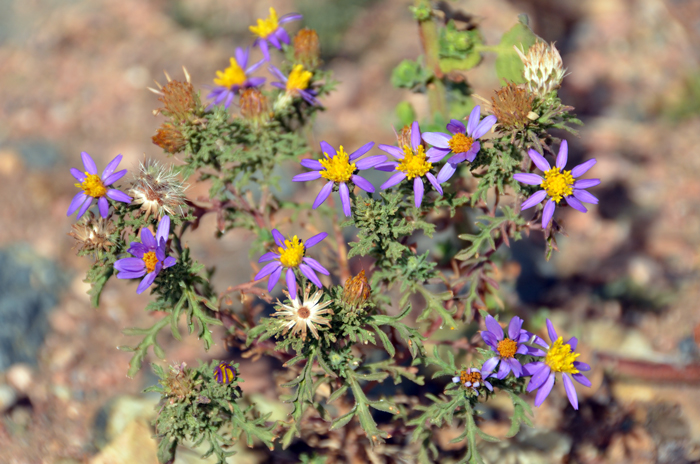
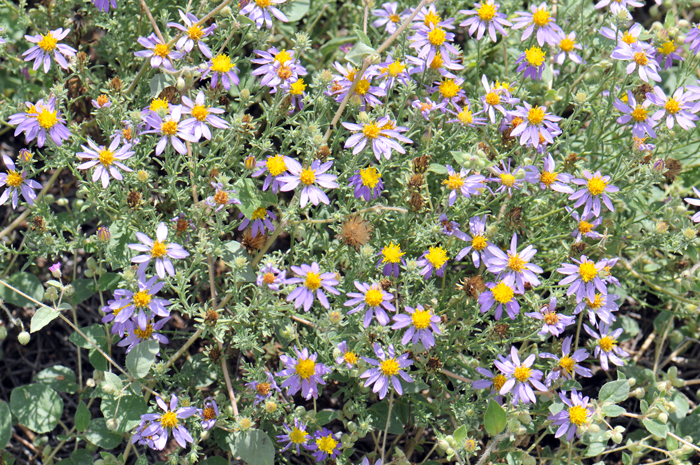
Scientific Name: Machaeranthera tagetina
Common Name: Mesa Tansyaster
Also Called: Mesa Tansy-aster (Spanish: Flor de Capita)
Family: Asteraceae, Sunflower Family
Synonyms: (Aster tagetinus, Machaeranthera humilis)
Status: Native
Duration: Annual with a taproot.
Size: Up to 20 inches (51 cm) tall, more or less.
Growth Form: Forb/herb; stems green, slender, branched; stems covered with minute soft erect hairs, some hairs, gland-tipped; attractive daisy-like flower.
Leaves: Green or grayish-green leaves; leaves arranged alternately along stems; pinnatifid and spine-tipped.
Flower Color: Bright purple and yellow showy flower heads; heads with both ray and disk florets; the bracts surrounding the heads are linear; fruit is a cypsela with pappus.
Flowering Season: March to November, summer blooms follow monsoon rainfall; blooms earlier in California; July to October or December
Elevation: 1,500 to 5,500 feet (457-1,676 m)
Habitat Preferences: Lower and upper Sonoran Desert and transition habitats, pinion-juniper, pine-oak woodlands and evergreen-oak communities and Creosote (Larrea) communities; slopes, grassy areas, mesas, streambeds and roadsides.
Recorded Range: Rare in the United States, found only in Arizona and New Mexico and also Baja California and Mexico in Chihuahua and Sonora. It is found throughout much of Arizona, heavy in central and south portions and in New Mexico where it is limited to the southern and southwest corner of the state.
North America & US County Distribution Map for Machaeranthera tagetina.
North America species range map for Mesa Tansyaster, Machaeranthera tagetina:
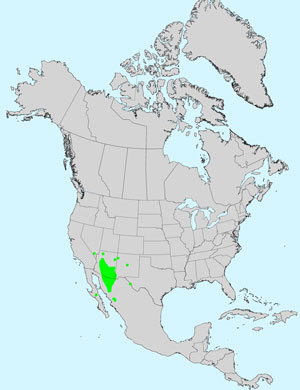
U.S. Weed Information: Unknown
Invasive/Noxious Weed Information: Unknown
Wetland Indicator: Unknown
Threatened/Endangered Information: Unknown.
The genus Machaeranthera was published by Christian Gottfried Daniel Nees von Esenbeck in 1832.
In the Southwestern United States: Arizona has 13 species of genus, California has 8 species, Nevada has 8 species, New Mexico has 14 species, Texas has 8 species, Utah has 8 species. Data approximate and subject to revision.
Comments: Mesa Tansyaster is a smaller species in the genus with a daisy-like flower. It is a rare species in the United States as it is found mostly in Arizona; smaller geographic ranges, with smaller populations are found in New Mexico. Although rare, this Sonoran Desert species is common in its preferred habitat where it is found.
Species of the genus Machaeranthera, are found primarily in the western parts of North America. They are commonly known as tansyasters. The word Machaeranthera is Greek for sword-like anthers and the anthers are actually sword-shaped and sharp-pointed. The pinnately shaped leaves helps seperate this genus from the similar Dieteria whose leaves are simple.
In Southwest Desert Flora also see Alkali Marsh Aster, Almutaster pauciflorus, Tansyleaf Tansyaster, Machaeranthera tanacetifolia, Hoary Tansyaster, Dieteria canescens and Mojave Woodyaster, Xylorhiza tortifolia.
The genus Machaeranthera was published by Christian Gottfried Daniel Nees von Esenbeck in 1832.
The species epithet “tagetina” (tageti'na:) is possibly named from genus Tagetes, which is named after the Etruscan god Tages who supposedly emerged from the earth as it was being ploughed and was imbued with the power of divination.

